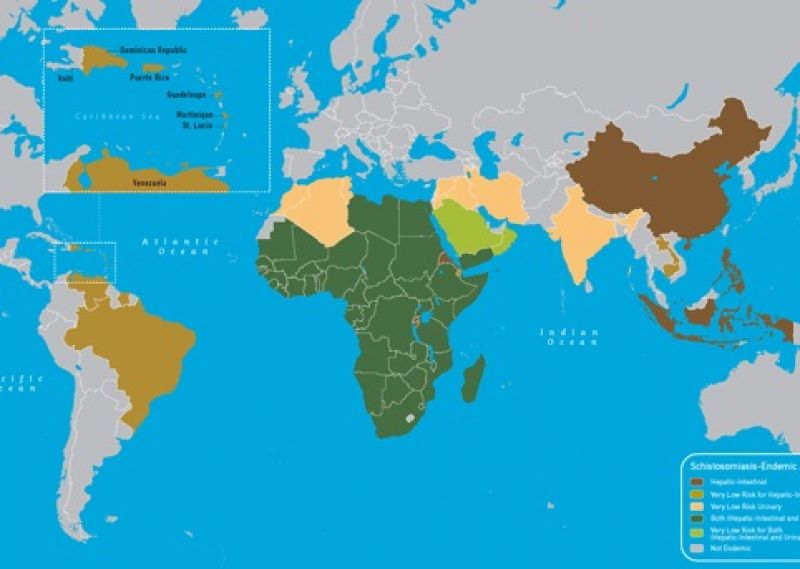
Research identifies trigger for tropical disease Bilharzia
Thursday 14 September 2017
RESEARCHERS have shed new light on the evolution of one of the world’s most devastating tropical diseases, Bilharzia, otherwise known as ‘snail fever’.
Bilharzia, caused by a parasitic worm found in freshwater called Schistosoma, infects around 200 million people globally and its advance can lead to death, especially in children in developing countries.
But the parasite’s growth can be impeded by nitric oxide, an immune system chemical, produced naturally in healthy humans and animals,according to a study by a team of researchers from China, the UK and the USA published in the journal Proceedings of the National Academy of Sciences.
Geoff Hide, professor of parasitology at the University of Salford, working with visiting professor Professor Zhao-Rong Lun, reached the conclusions after study of a rat strain that cannot make nitric oxide.
Natural resistance
“This strain of rat is highly susceptible to infection and the severe pathology caused by the parasite. When we return nitric oxide levels to normal in these rats, they recover their natural resistance to the parasite.”
The study describes how nitric oxide blocks growth of the parasite. When it is in the body, the parasite releases eggs into the liver, intestine and other organs causing growths known as granulomas. These granulomas cause the severe pathology that cause disease and even death. This study shows that nitric oxide blocks growth of the reproductive organs of the parasite, it cannot then produce eggs, so granulomas do not form and then no disease effects are seen.
Nitric oxide - a natural gas related to laughing gas - cannot be administered to humans, highlighting the vital role of a strong immune system.
Contaminated water
Professor Hide added: “Treatment for tropical diseases are most commonly considered to be vaccinations and other post-infection medicines, but it is also vitally important that we think about therapies which encourage people’s immune systems to produce NO”.
Bilharzia is found predominantly in Africa, Asia and South America and is transmitted by a water-dwelling snail. The parasite is released from the snail and contaminates water. Humans acquire the parasite by skin contact with contaminated water.
The research team also included Professors AlanWilson, in York and Francisco J Ayala, in the USA.
See Proceedings of the National Academy of Sciencesfor more http://www.pnas.org/content/early/2017/09/01/1708578114.abstract





